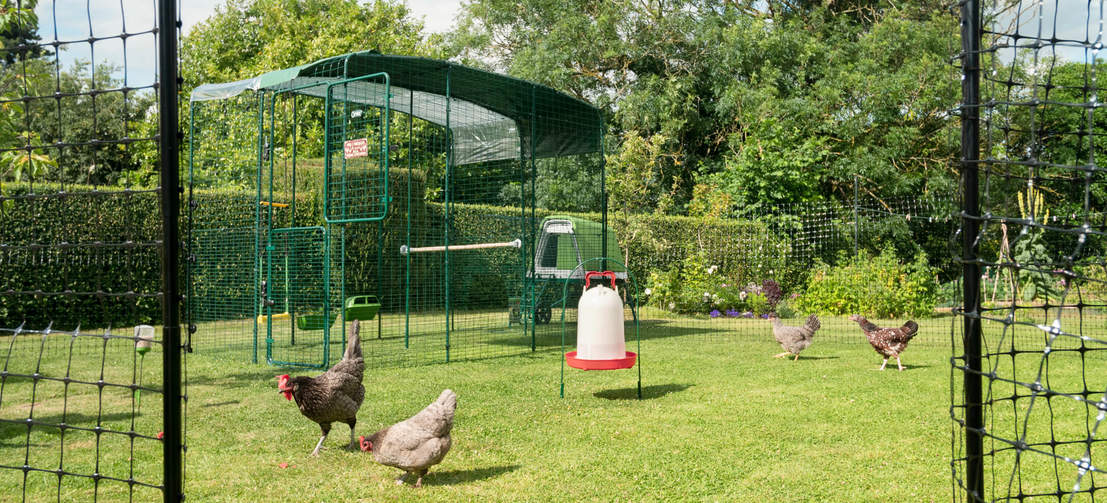How to Introduce New Chickens To Your Flock

Many of us know what it’s like. You start with a few chickens, thinking you’re just going to try it out, but once you realise what amazing pets they are and what delicious eggs they lay you will probably soon think it’s time to expand the flock and get some more hens for your garden.
But adding new chickens to an existing flock is easier said than done, and it’s important to know what you’re doing to avoid bickering and bullying, or even worse.
The key to introducing chickens is time. Be patient, it might take a while before your new individuals are living happily with your current flock, but it will be worth it in the end. Each breed of chicken is different, and all chickens have different personalities, so how well your attempts will go depends on many different factors. Here are some useful things to think about:
Make the right choices
Some people say sticking to the same breed is a good idea, but it’s definitely possible to have several different breeds living side by side. If possible, add chickens that are of similar age and size as your existing ones. Smaller, younger hens will easily become a target if added to a group of larger chickens, and new younger, fitter chickens might cause stress for the older members of your current flock. Never add chicks to a group until they are old and strong enough to fight back if someone decides to bully them.
Also never introduce a chicken on her own; she is bound to become bullied in an already established pecking order. The more chickens you add, the more the pecking order will have to change, and it will be easier for the group to decide who is actually the most dominant. If possible, adding more chickens than you already have will often minimise problems with bullying, but it’s a risky game if you plan on expanding your flock more than once!
Quarantine
The first step in the process is to quarantine the new chickens somewhere away from your flock to make sure they don’t carry any diseases or parasites. Do regular health checks on the new chickens while you’re keeping them separate, and treat any illness you might come across. It might be worth doing a worming treatment and to dust them in DE a few times to be extra sure they are not bringing in any parasites into your coop.
Quarantine the new birds for at least a week, preferably longer, or until you’re certain they are happy and healthy.
Slow introductions
Unfortunately you can’t just plonk the new chickens down with the old ones as soon as you’re sure they are healthy. Instead you must allow them to get used to each other. Ideally this is done by placing the two groups close enough to each other that they can see and smell each other, but not close enough that they can touch. They will hopefully be curious of the other group, but not feel that their home is being invaded. The partitions for the Omlet Walk in run is perfect for this stage, as it means you can divide the run and slowly introduce the two groups.
Keep this setup for at least a week. It may seem like they have gotten used to each other after a few days, but for chickens there’s a big difference between seeing some hens over the fence and actually sharing a coop and run with them. Be patient, then you’re more likely to succeed.
The big meet
When you think it’s time for the two groups to meet for real, it is best done in a new, neutral area that no chicken has claimed as her own, even if it’s just a small fenced off area in the garden.
It’s always best to let the old flock come to the new, so put them down before you let your existing flock approach. This is especially important if you’re carrying out the introduction in the flock’s current run: don’t let them out of the coop until the new chickens are comfortable on the run.
Try putting up some entertaining distractions that might avert their attention somewhat. Fill a Peck Toy or a Caddi with your chickens’ favourite treat, and they will hopefully be more interested in that than the newcomers.
Another thing worth trying is introducing chickens in the night when they are quietly roosting in their coop. Open the door of the Eglu and put the new chickens in with your existing ones. This allows them to get used to the presence and the smell of the new chickens while they are sleepy and not likely to attack. This seems to work really well for some, whereas it leads to a few problems for others, so it’s up to you if you want to risk it. Make sure you are there in the morning when the chickens wake up to see how they are reacting to their new friends.
As we said, it might take a while before the flock goes back to its harmonious self. You must prepare yourself for some disagreement and a bit of bullying, this is part of establishing the pecking order. It should however have calmed down after a few days, maybe a week. If you notice that chickens are getting seriously hurt or are drawing blood it’s time to step in. Identify the main bully and isolate her somewhere else for a few days on her own. It might seem harsh, but it’s the best thing you can do for your flock. When you put her back with the group she will be too busy trying to figure out the new order that she won’t have time to bully.
This entry was posted in Chickens